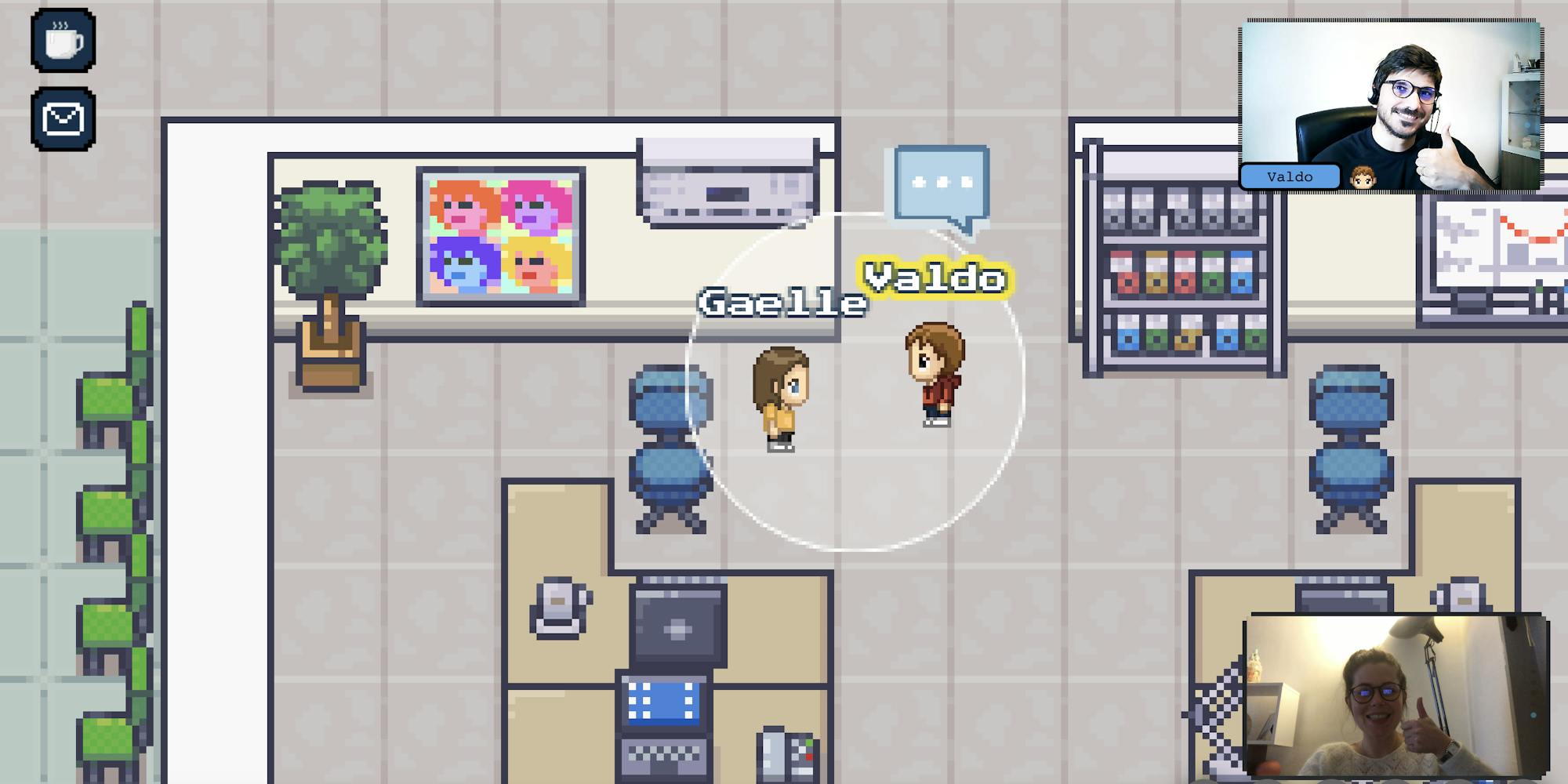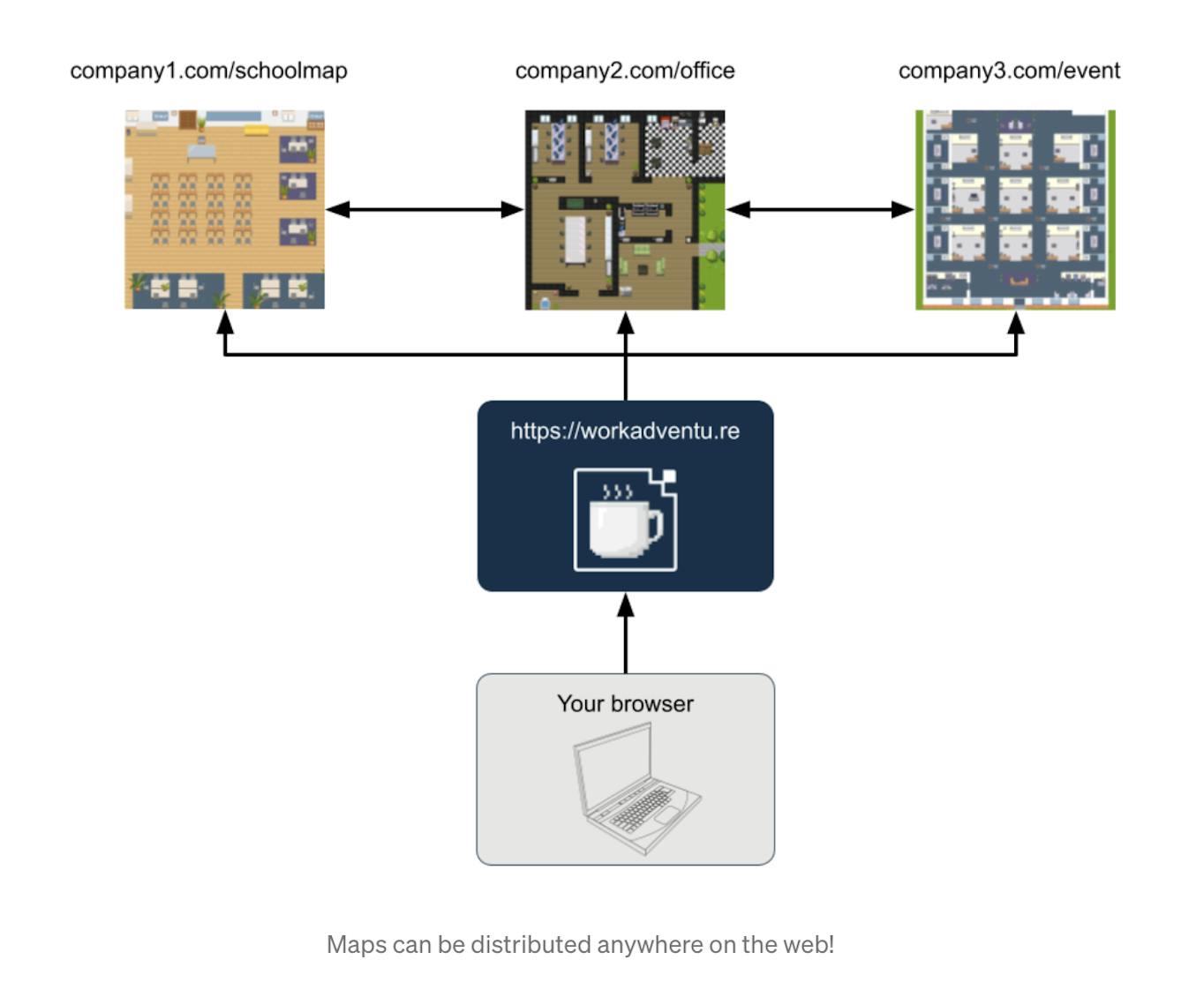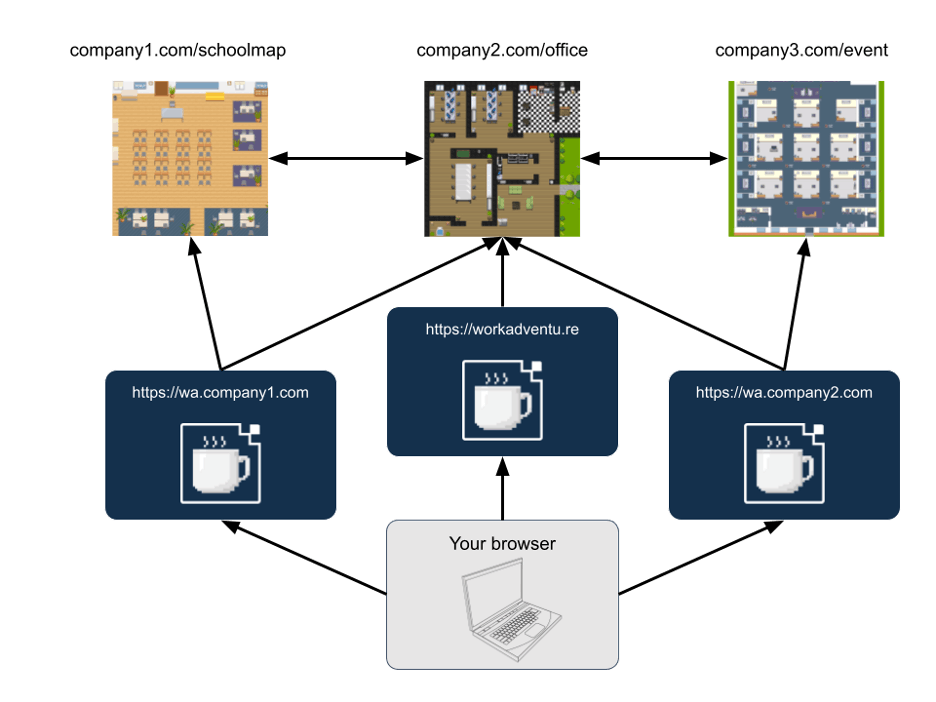🌎 The Metaverse and what it takes to get there

Dear Mark,
Congratulations on rebranding Facebook to “Meta”. I’ve had a close look at your announcement and it is clear that you are going strong into building “The Metaverse”.
Welcome to the club!
You are clearly the biggest player in this field, but definitely not the first. Actually, it is even becoming a very crowded space. Metaverse this, metaverse that… “Metaverse” is becoming the next “blockchain”, a magical buzzword that will automatically grant you the attention of numerous investors all around the world. And many companies are already claiming to be building “The Metaverse”, whether they are huge game companies like Epic, or smaller startups, like Gather or Branch.
Oh, but I realize I haven’t introduced myself yet! For those of you who don’t know me, I’m David, CTO of WorkAdventure, a brand new video-chat platform in a virtual universe whose purpose is to make online interactions more human.
So yeah, most of my day, I’m building a parallel universe where people can interact, work together, socialize, and in general, be more efficient together, especially if they are working remotely.
It is very different from Facebook’s metaverse though. We are not betting heavily on VR headsets, but on low tech (retro 2D game engines) that will be available to anyone. Yet, we all have this in common: we want to build virtual places where people can meet and interact more naturally than in a Zoom meeting.

So, what does it take to build a metaverse?
Well, first of all, you need a virtual universe and people interacting in this universe with their avatars. But this is of course not enough. Otherwise, any multiplayer game like “World Of Warcraft” would be a metaverse.
Next, you need the ability for your users to build their own spaces (you can call them virtual rooms) where they can meet. In a metaverse, content is provided by your users. But this is not enough yet! Otherwise, Minecraft or the Sims would be a metaverse.
The notion of metaverse comes with the idea that you can explore this virtual universe. So the spaces should not be isolated islands. Instead, walking through a door should take you to another space, just like clicking on a link on internet takes you to another website. In a metaverse, the spaces are interconnected.
So let’s recap. To build a metaverse, you need:
-
A virtual universe
-
Enabling people to interact as avatars
-
Open enough to let your users build spaces
-
These spaces can be connected to each other
And I’m pretty sure Facebook Home, Horizon and Workrooms are going to fill these conditions and be great products.
But Mark, I’ve also paid attention to what you said. You don’t want to build “a” metaverse. You want to build “THE” metaverse. And to be honest, this is a little scary.
I have no doubts that the Facebook metaverse will be “open”. You are already working on APIs so that third party developers can connect to “the metaverse” (I should really say “your metaverse”). You even have a track record of building great developer communities around your products.
I was there when Facebook started. Not many remember how one of the selling points of Facebook was that you could install third party applications into Facebook. Oh… but where are those third party Facebook applications today? Yeah… you discontinued them as soon as Facebook was big enough. Tell me… do you plan to do the same thing with “The Metaverse”?
Building online presence
In a metaverse, you are able to build a physical presence in a virtual world. This word: “Presence” is very interesting. Because, in a sense, we are all already present in the digital world when we connect to an instant messaging application. When I connect to Facebook Messenger, Whatsapp or Signal, I am creating a virtual presence online.
So naturally, when we talk about “The Metaverse”, the first building block should be declaring we are available online… so a good instant messaging system!
So let’s look at the track record of the industry…
It’s been 30 years since the internet exists. In the early days, we built protocols to share knowledge (through web pages in HTML), protocols to exchange mails (SMTP)… it should have been a matter of months before a universal instant messaging platform was available, right? Right?
Yet, here we are, 30 years later, and the instant messaging landscape is a clusterfuck of siloed applications and walled gardens. Why the hell cannot I speak from Whatsapp to someone on Google Hangout?
We all know this is not a technical challenge. The open XMPP protocol (formerly Jabber) has existed for 22 years to enable interoperability between messaging clients and none of the big players is using it. Or worse, some started by supporting it (like Slack or Google Hangout) and then dropped support when their user base was big enough, to lock their users in.
Because we all know that this is the only thing that matters for a big corporation: locking users in. Your company value is directly proportional to the number of users you have.
So naturally, when building “The Facebook metaverse”, your sole goal will be to lock more users in your ecosystem. You will therefore try to act like a gatekeeper. Other big companies will step in, and will want to be the gatekeepers too. And we will end up with many siloed virtual universes. Goodbye, the idea of “the metaverse”.
A good model: the Web
The funny thing is that you are about to make the same mistake AOL or CompuServe (or Microsoft) made in the 90s, when the web began. Those corporations thought they could have their own private internet. But what made the web successful was that it was fundamentally distributed, and owned by no one.
And there are many similarities between the web and the metaverse:
-
On the web, you navigate web pages, linked by hyperlinks.
-
On the metaverse, you navigate digital spaces or rooms, linked by entries and exits.
But, web pages can also be hosted on any server, anywhere on the planet.
So why should it be different for virtual spaces?
At WorkAdventure, from the ground up, we had that idea that we should not host our users’ rooms. That these rooms are not our rooms but their rooms, and that therefore, they should retain the ability to host these rooms.
Our small 10-person team is nowhere as powerful as Facebook’s 10k-person engineering team, and I don’t even have the ambition to claim we are building a metaverse. And yet, I believe we are closer to building one than Facebook, or any of our competitors. Let me tell you why!
WorkAdventure: a distributed model for an open virtual world
Rooms in the metaverse are very similar to web pages. To browse a web page, you use a web browser. Well, to navigate the metaverse, I believe you should use a similar tool. Let’s call it a “metaverse browser”, right?
WorkAdventure is not designed to be a monolithic platform that hosts virtual universes provided by users. No. In WorkAdventure, virtual universes are simple static files that can be hosted anywhere on the web and WorkAdventure will load those files, wherever they are. We don’t own the maps the users design. We don’t have control over those. Heck, we wouldn’t even be able to moderate the content of a virtual room if we were asked to. And you know what? This is actually a good thing!

But hosting the files of a map is only part of the problem. The position of all players in a map must be shared through some servers, and most of the time, the video conversation you are having with friends or colleagues must also be relayed by servers. And not only one company can own these servers.
In WorkAdventure, we made the code freely available. So any company can install its own server if they want it. They are free to modify and improve the code, thanks to the AGPL v3 + commons clause license. The only right we are keeping is the right to sell subscriptions online. This should be enough for us to build a successful business model without locking anyone in.

Yet, WorkAdventure is in no way a metaverse yet. We are lacking key features, like the ability to jump from one WorkAdventure server to the other seamlessly, or the ability to have a shared avatar amongst all servers.
But we are getting there. Nowadays, the technology is mature enough and there are plenty of protocols, like XMPP or Matrix that allow building distributed services over the internet. It will take years before a truly distributed system can emerge, with a true communication protocol. If this happens, developers will have the ability to install virtual reality servers just like they install web-servers today, from a variety of providers. One thing is sure though… no single company will own this new virtual space. This is all exciting; we will continue to keep an eye on the Facebook metaverse but we have a strong feeling that we are in the best direction.
In the meantime, here, at WorkAdventure, we will keep building our platform, one feature at a time, in collaboration with our great community, and our users will keep building their digital universe, whether it is an office, a rooftop, a church, or a forest in a fantasy world.
We believe that people will not fall for another walled garden, spied and controlled metaverse. We don’t need that. And I invite anyone who wants to get a taste of what a metaverse must be to come and try WorkAdventure.
